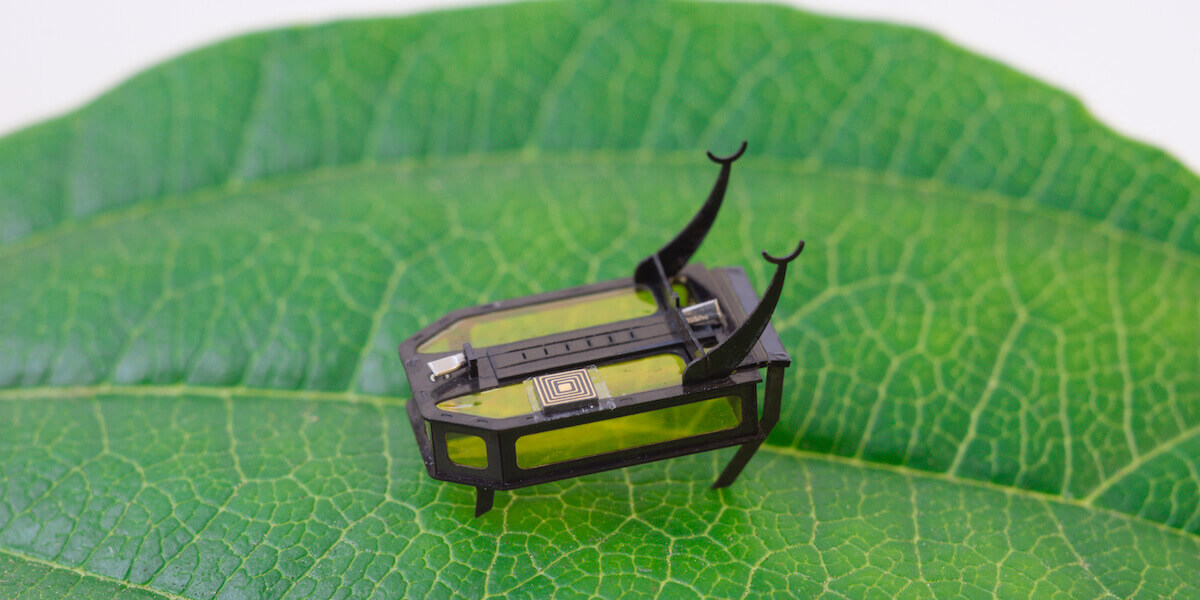USC Viterbi Researchers Create the Lightest, Smallest, Fully Autonomous Crawling Microrobot to Date
Researchers from the Autonomous Microrobotic Systems Laboratory (AMSL) at USC Viterbi have created the world’s lightest and smallest, fully autonomous crawling microrobot. The RoBeetle weighs only 88 milligrams—the equivalent of about three grains of rice—and relies on a new type of actuator that functions as an artificial muscle.
Working with AMSL principal investigator Néstor O. Pérez-Arancibia, Xiufeng Yang, Ph.D. ’20, and Longlong Chang, Ph.D. ’19, began their research six years ago. Inspired by the biodynamics of insects, the RoBeetle is actuated by a micro artificial muscle that transforms the chemical energy of fuels such as methanol, hydrogen, propane or butane into mechanical work through a periodic process of controlled catalytic combustion.
Yang, Chang and Pérez-Arancibia describe the technology as 2H, that is, it combines the high work density (HWD) associated with shape-memory alloy (SMA) materials with the capability of using sources of power with high energy densities (HEDs). The introduction of 2H actuation is a major breakthrough, Pérez-Arancibia explained, because even though many impressive microrobots have been developed in the past 20 years, progress in terms of autonomy at the subgram scale has been hindered by a lack of microactuation methods with HWDs capable of using sources of power with HEDs.
Most microactuators currently available for robotic applications are driven electrically. However, the battery technology, in terms of energy density and power, required to drive systems at the scale of RoBeetle has yet to be developed. Robots of similar weights (about 100 milligrams) thus remain tethered, making RoBeetle the first in its class to be autonomous.
“The research produced during the development of RoBeetle, along with other exciting microrobots such as the Bee+ and the SMALLBug, positions the Autonomous Microrobotic Systems Laboratory among the world leaders in the field of microrobotics,” said Pérez-Arancibia, who is an assistant professor in the Department of Aerospace and Mechanical Engineering.
RoBeetle’s fuel-powered design may serve as a paradigm for the creation of a new, diverse generation of autonomous microrobots capable of locomotion on land and in air and water. The ASML team has already combined the notion of controlled catalytic combustion with that of fast SMA actuation mechanism to develop fast catalytic artificial muscles. Pérez-Arancibia believes that this breakthrough will enable the creation of the very first fully autonomous, subgram flying robot, which is inspired biologically by butterflies.
Their research, funded by the National Science Foundation and the Defense Advanced Research Projects Agency (DARPA), was published in Science Robotics.




